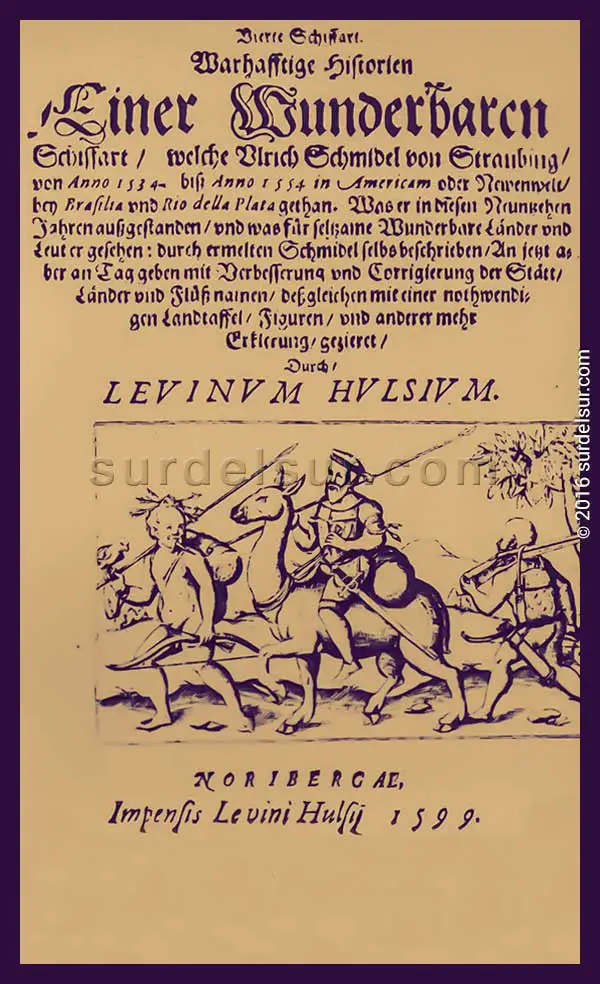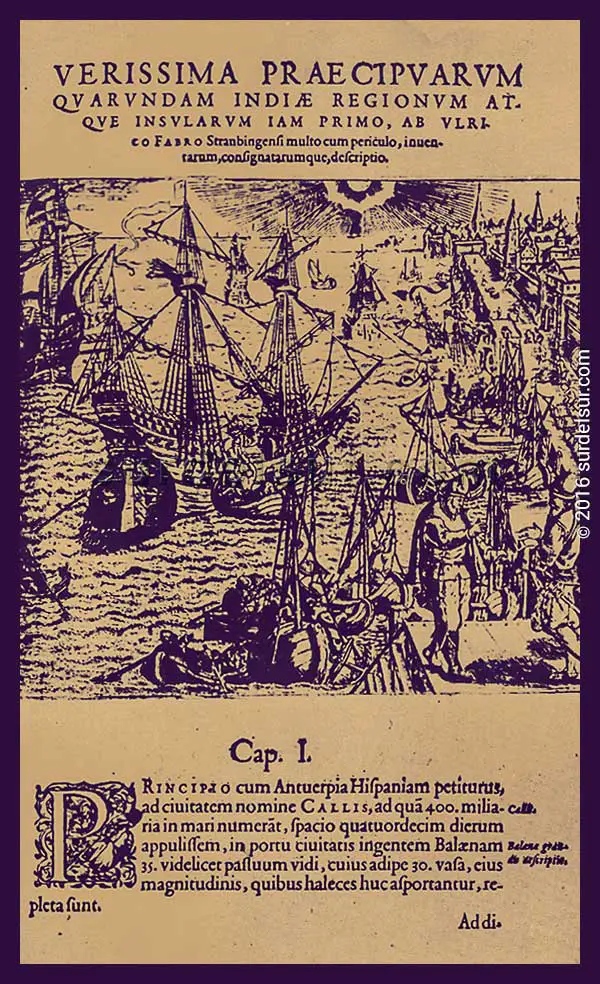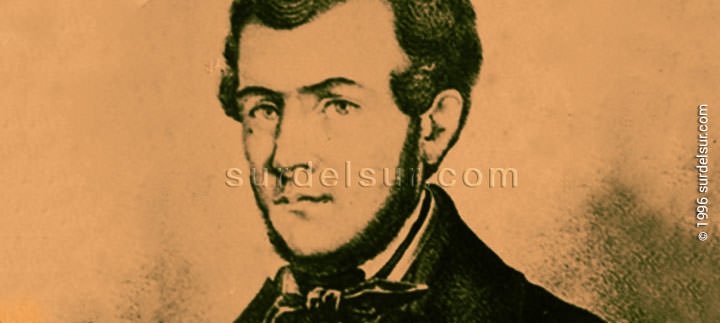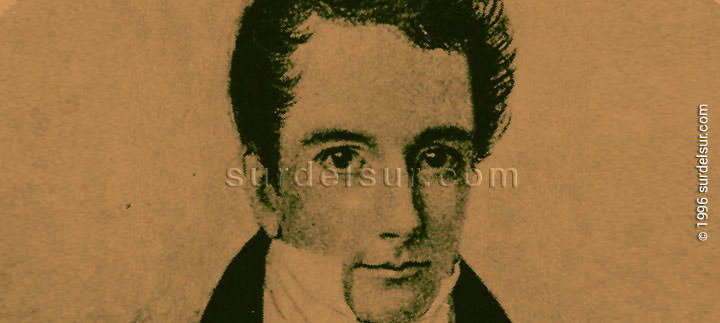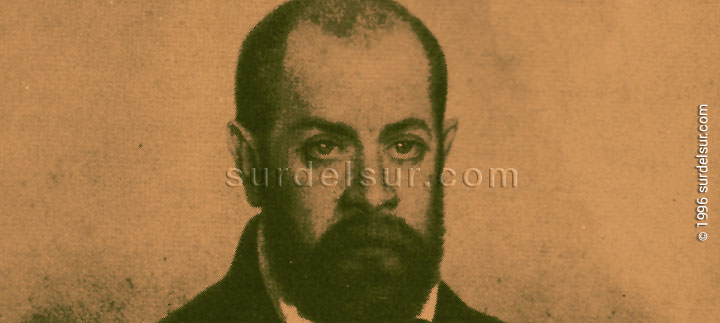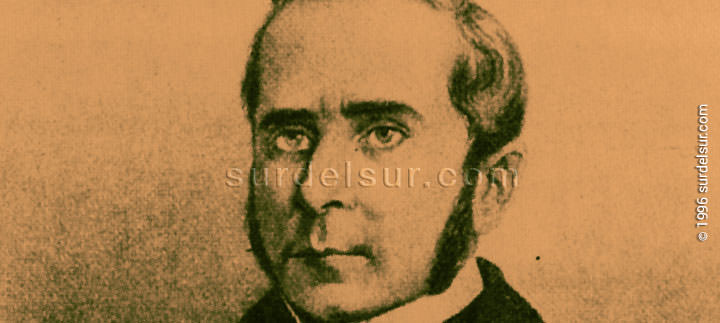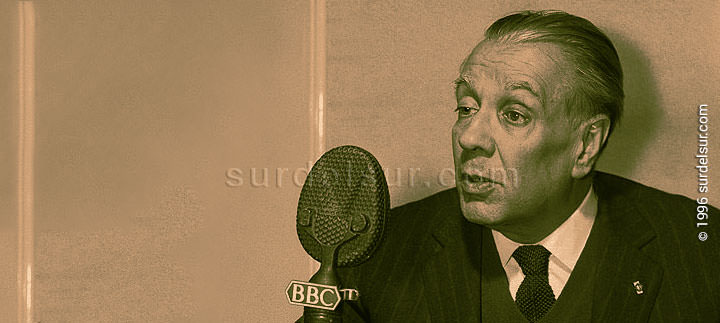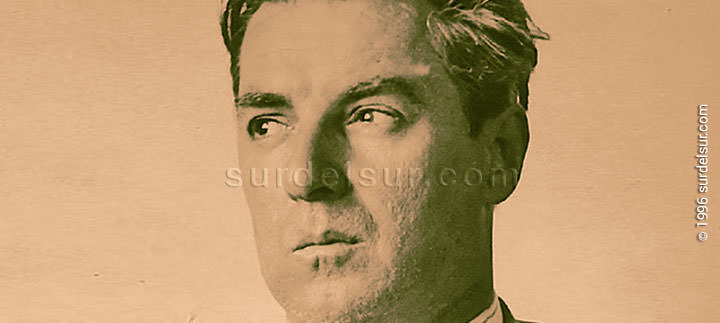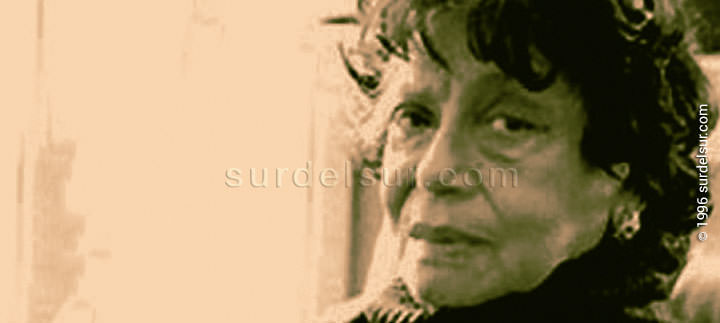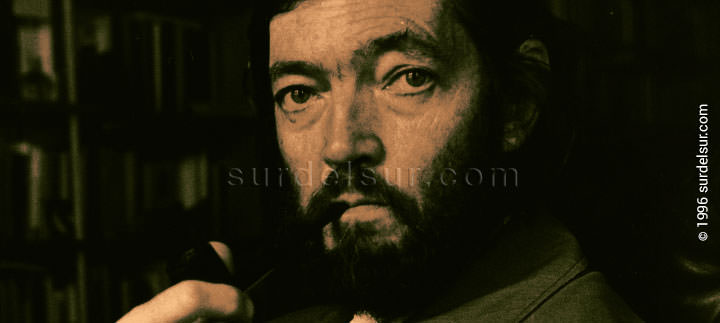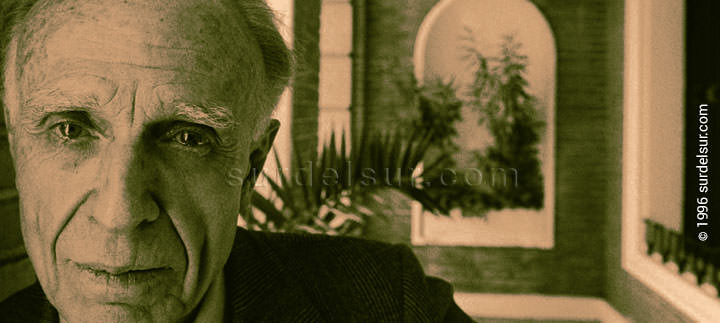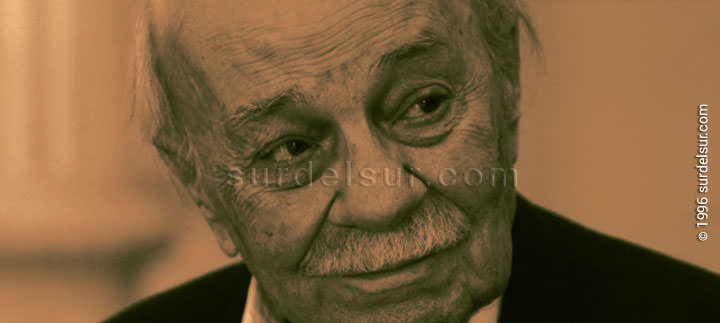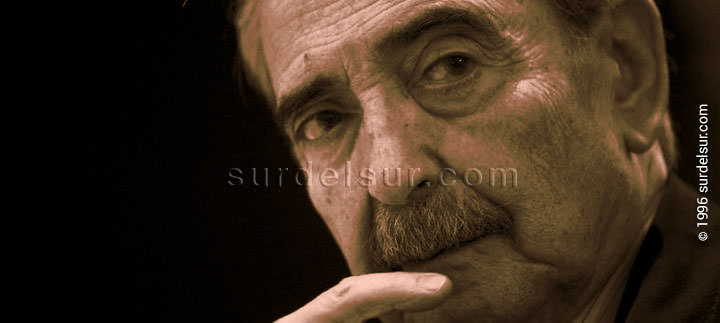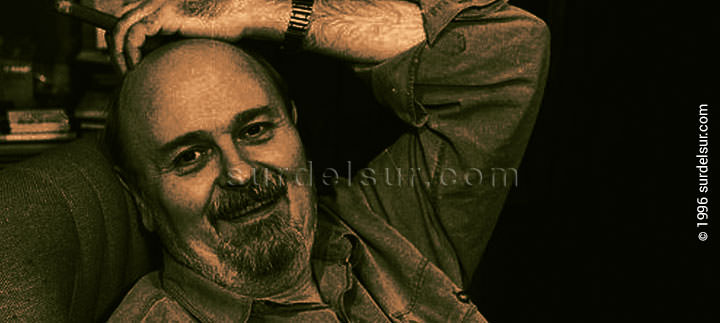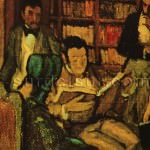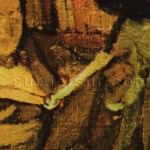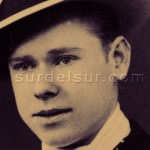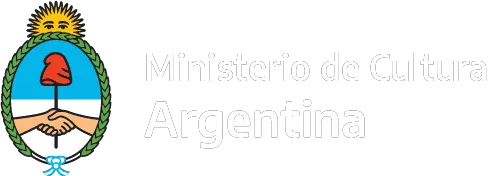This is the history of Argentine literature, from the time of the Spanish conquest and colonization of the Argentine territory until the 1990s. It is a brief review of the schools, movements, and tendencies of Argentine literature together with the main writers. and poets.

Article of the guest columnist for surdelsur.com
CONTENTS
Origin of Argentine Literature in the Colonial Period
The history of Argentine literature begins to be written with the arrival of the Spanish conquerors. Within the panorama of the literature of the Río de la Plata, Amerindian features are not recognized, which distinguish, for example, those of Mexico and Peru.
Spanish-speaking literature in the Argentine territory begins with the Spanish conquest and colonization. The conquerors brought in their crew of chroniclers who were in charge of writing and describing what happened during the journey to the new lands.
Chronicles of the Río de la Plata by foreign travelers
Cover and first chapter of Viaje al Río de la Plata (1534-1554) by Ulrico Schmidl, edition by Levinus Hulsius a version of the book can be found here
The first literary records found in the history of Argentine letters are the chronicles of foreign travelers. With the expedition of Pedro De Mendoza, the protagonist of the first foundation of Buenos Aires in 1536, the German soldier Ulrico Schmidl (1510-1580), an outstanding chronicler of the time, arrived at the Río de la Plata. and Martín del Barco Centenera (1510-1580).
Martín del Barco Centenera (1510-1580), a Spanish cleric and inquisitor, actively participated in the conquest and colonization of the Río de la Plata region beginning in late 1573. He is especially remembered for being the author of the “historical poem”: Argentina y Conquista del Río de la Plata con otros acaecimientos de los reinos del Perú, Tucumán y el Estado del Brasil (1602) (Argentina and conquest of the Río de la Plata along with other events in the kingdoms of Peru, Tucumán, and the State of Brazil), in which the place name “Argentina” appears for the first time to name this region.
Writers born in the Río de la Plata
Ruy Díaz de Guzmán (1558-1629), a native of Asunción, Paraguay, is considered the first chronicler born in the Río de la Plata.
Luis de Tejeda y Guzmán (1604-1680), a disciple of Góngora and San Juan de la Cruz, is the first Argentine poet to record Argentine literature at its origins.
In the history of Argentine literature, the letters of the colonial or viceregal era -pseudoclassical, baroque, and epic- grew under the protection of the independence fervor: Vicente López y Planes (1785-1856), Pantaleón Rivarola (1754-1821) and Esteban de Luca (1786-1824).
History of Argentine Literature of the 19th Century
During the 19th century, Argentine literature functioned as a vehicle for transmitting ideas aimed at building the nation and national identity.
Gauchesca Literature
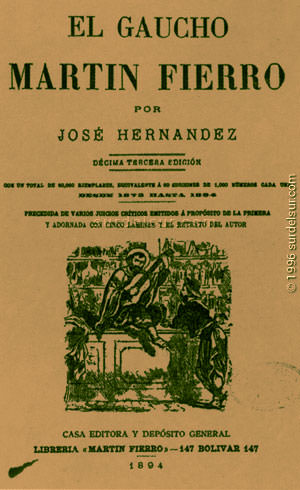
José Hernández (1834-1886)
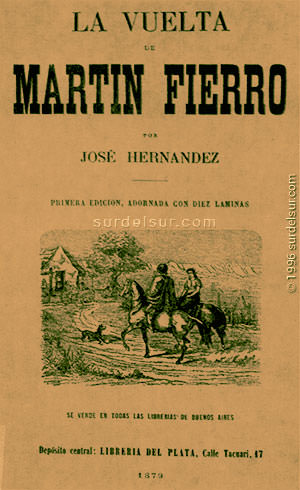
José Hernández (1834-1886)
Outlines of gaucho literature appear with Bartolomé Hidalgo (1788-1822), Hilario Ascasubi (1807-1875), and Estanislao del Campo (1834-1880). This native genre will reach its maximum expression with the work El gaucho Martín Fierro (1872), by José Hernández (1834-1886), and later the gaucho book Vuelta de Martin Fierro (1879), representative of national sentiment and character.
The Generation of 1837
It is the generation of the proscribed by the government of Juan Manuel Rosas. It is the young generation of ’37, founder of the Association of Mayo, who from exile continued to work in an effort to overcome the antinomy faced by unitary and federal.
Critics of the Spanish enlightenment of Rivadavia, propitiate the break with Spanish tradition in favor of French romanticism supporting the return to popular sources and the medieval past. This situation allows Esteban Echeverría (1805-1851), its leading follower, to be the writer of the first local and realistic short story: El matadero (The Slaughterhouse). He concluded his writing in 1840 but was published in 1871 after his death because of the parallel between slaughterhouses and the Rosas government. He also wrote the poem, La Cautiva (The Captive Woman, 1837), where the Pampa setting is fundamental. Also Dogma Socialista (Socialist Dogma, 1846). Mature literature in intellectual and political terms started to flourish.
In this period before the fall of Rosas regime, other young people stand out with their works. Juan Bautista Alberdi (1810-1884): Fragmento Preliminar al estudio del derecho (Preliminary fragment to the study of law, 1837) Bases y puntos de partida para la organización política de la República Argentina (Bases and starting points for the political organization of Argentina, 1852); Domingo Fautino Sarmiento (1811-1888) with Facundo (1845).
First Argentine Novel
By the mid-19th century, José Mármol (1817-1871), publishes the first Argentine novel Amalia (1855).
Meanwhile, poetry decreased its combative spirit and turned towards the anecdotal and sentimental, as is the case of Carlos Guido y Spano (1827-1918) and Ricardo Gutiérrez (1836-1896).
Also, the chronicles of manners prosper, among their exponents are Vicente Fidel López (1815-1903), Lucio V. Mansilla (1831-1913), and Juana Manuela Gorriti (1818-1892).
Lastly, the historical chronicles, which are represented by Bartolomé Mitre(1821-1906), testify to the sentiment of the national organization.
The 1880s Generation
The generation of ’80, a theoretical and methodical trace, of literature with its own signs, accentuates the Europeanizing coloration and the cultural primacy of Buenos Aires par excellence. The letters of the province are not yet significant.
The immigration current of ethnic variety accentuates the change from a big village to a cosmopolitan city. The poetry is lyrical and imprecatory, its representatives are Leopoldo Díaz (1862-1947) and Pedro B. Palacios “Almafuerte” (1853-1917).
On the other hand, the essay is a recent genre, in which the following stand out: José Manuel Estrada (1842-1894), Pedro Goyena (1843-1892), and Joaquín V. González (1863-1923).
Finally, the narrative in the generation of ’80, swings between the social and the depiction of manners, an example of this are Miguel Cané (1851-1905), Eugenio Cambaceres (1843-1888), Julián Martel (1867-1896), Francisco Sicardi (1856-1927) and Carlos María Ocantos (1860-1949).
Modernism
In Argentine literature history, by the late 19th century, Rubén Darío’s, hand and letters brought Modernism. Rubén Darío(1867-1916), is a Nicaraguan poet called “the prince of Castilian letters”.
Euphuism and symbolism summarize the new aesthetics, which would later lend the most vital voice to contemporary Argentine poetry: Leopoldo Lugones (1874-1938), to whom we owe the first science fiction short story in our literature. Lugones is the paradigm dividing Argentine literature into two domains.
History of Argentine Literature of the 20th Century
Continuing with the history of Argentine literature, we entered the 20th century where a period of political stability began after the internal wars, together with the contribution of European immigration and economic growth.
Argentine literature of the 20th century is characterized by the desire for experimentation. The appearance of different movements and vanguards seeks to create new forms and contents.
Simplism and Criollism
Leopoldo Lugones’s voice would continue to echo for a long time, but, at the same time, there appeared two creative lines: First, Criollism (from criollo, the word applied to the native inhabitants who were born from Indians and Spaniards), pontificating rural realism with Horacio Quiroga (1878-1937) and Roberto J. Payró (1867-1928).
The second line is the Simplism, a poetry of popular with Evaristo Carriego (1883-1912) and Baldomero Fernández Moreno (1886-1950). A critical interim allows us to rescue, among others, Ricardo Güiraldes (1886-1927) and Guillermo E. Hudson’s (1841-1922) traditionalism; Enrique Larreta’s (1875-1961) euphuistic; and Enrique Banchs’ (1888-1968) mester de juglaría (verse in the manner of troubadours).
Matinfierrismo
The magazine Martin Fierro, published in 1924, marks the emergence of a new trend. The first established generation within Argentine letters was undoubtedly the Martinfierristas (circa 1922). This movement would contribute with an intellectual doctrine that comprises two representative branches:
The first one is Florida, ascribed to ultraism with Oliverio Girondo (1891-1967), Jorge Luis Borges (1899-1986) probably the most famous Argentinian writer, Leopoldo Marechal (1900-1970), and Macedonio Fernández (1874-1972)
The other one is la de Boedo, impressed by Russian realism with Raúl González Tuñón (1905-1974), César Tiempo (1906-1980), Elías Castelnuovo (1893-1982), and Ricardo E. Molinari (1898-1996), with a classical, lyrical and euphuistic style.
Novisimos
Between the end of that decade and the beginning of the next were the Novisimos (most novel).
A new generation of poets: Arturo Cambours Ocampo (1908-1996), Carlos Carlino (1910-1981), and José Portogalo (1904-1973),
Also storytellers like Arturo Cerretani (1907-1986), Roberto Arlt (1900-1942), Luis María Albamonte (1911-1982) y Luis Horacio Velázquez (1912-sf))
There was no shortage of playwrights like Roberto Valenti (1907-1958), Juan Oscar Ponferrada (1907-1990), and Javier Villafañe (1909-1996). This group claimed the philosophical reflection of man and the restoration of Argentine essence.
The 1940s Generation
The 1940s Generation is centered on poetry, which develops descriptions, nostalgia, and memory with Vicente Barbieri (1903-1953), Olga Orozco (1920-1999), León Benarós (1915-2012), and Alfonso Sola Gonzáles (1917-1975).
Storytellers lined up with idealism: María Granata (1923), Adolfo Bioy Casares (1914-1999), Julio Cortázar (1914-1984), and Manuel Mujica Láinez (1910-1984) Others with realism: Ernesto L. Castro (1902), Ernesto Sábato (1911-2011) and Abelardo Arias (1918-1991)
Also were authors with an urban touch or elements dealing with the portrayal of manners: Joaquín Gómez Bas (1907-1984) and Roger Plá (1912-1981).
Essayists are not too numerous: Antonio Pagés Larraya (1918-2005), Emilio Carilla, and Luis Soler Cañas (1918-1984).
Neohumanism
Towards 1950, another milestone can be found: el Neohumanism, which is a response to the new state of post-war thinking.
On one path are the avant-gardists: Raúl Gustavo Aguirre (1927-1983), Edgar Bayley (1919-1990), and Julio Llinás (1929).
On the other, the existentialist: José Isaacson (1932), Julio Arístides, and Miguel Ángel Viola;
Beyond the two, there are those who reconcile both trends with regionalist support: Alfredo Veiravé (1928-1991), Jaime Dávalos (1921-1981) y Alejandro Nicotra (1931).
Among the storytellers, we find burning records of the period: Beatriz Guido (1922-1988), David Viñas (1927-2011), and Marco Denevi (1922-1998). In most of these writers, there is a perceived influence of Anglo-Saxon and Italian poetry.
The 1960s Generation
A new generation breakup takes place in the 1960s. Influences are varied: Sartre, Camus, and Eluard; some Spaniards like Celaya; and native writers such as Borges, Arlt, Cortázar, and Marechal.
Two trends stand out: the trace of metaphysical time and historicity: Horacio Salas (1938), Alejandra Pizarnik (1936-1972) and Ramón Plaza (1937-1991) and social and urban convulsions: Abelardo Castillo (1935), Marta Lynch (1925-1985) and Manuel Puig (1932-1990).
The 1970s Generation
In Argentine literature history, the 1970s are dark for intellectual creation. The sign of the times is exile: Juan Gelman (1930-2014) and Antonio Di Benedetto (1922-1986); or death: Roberto Santoro (1939-1977), Haroldo Conti (1925-1976) and Rodolfo Walsh (1927-1977).
Some poets: Agustín Tavitián y Antonio Aliberti (1938-2000), storytellers: Osvaldo Soriano (1943-1997) and Fernando Sorrentino (1942); and essayists: Ricardo Herrera and María Rosa Lojo (1954) stand out among the vicissitudes and renew the field of ethic and aesthetic ideas.
Again, their references are Eluard, Eliot, Montale y Neruda.
From 1990
The 1990s decade marks the reunion of the survivors of different generations, in an intellectual coalescence to review values and texts, before an enigmatic but hopeful end of the century.
Learn more about the relationship between literature and tango: El lunfardo y el Tango report by José Gobello Presidente of Academia Porteña del Lunfardo (Porteña Lunfardo Academy), from 1995 until his death in 2013.
References:
All graphic material in this report is edited digitally. The customized version by surdelsur.com shown on this page is performed based on the following documents:
- Archivo General de la Nación [Ancient Photographs] Collection of ancient images belonging to the General Archive of the Nation. Archive Photographs
Bibliography
- Argentina.gov.ar Ministry of Education, Digital Library

